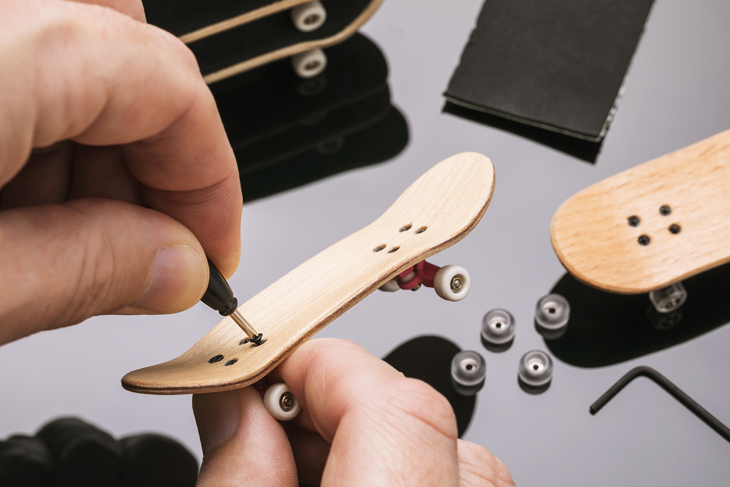
What Makes up a Fingerboard?
Are the Pokemons only staying in your phone and game app? You will feel not sure after watching this funny videos.
Imagine taking a skateboard and putting it under a giant shrink ray and shrinking it down to 1/8th the normal size and using your fingers to control it. Sounds wild, doesn’t it? Well, this exists, and it’s affectionately called the fingerboard. Chances are, you’ve been exposed to one of these bad boys already if you were around in the late 1990s, when they were introduced under the Tech Deck Brand. Kids everywhere were using their fingers to do tricks and build miniature skateparks in their rooms and having insane amounts of fun (I was one of them!). The amazing thing about fingerboards is that the components are the same as a regular sized skateboard but may be altered slightly. The components are the deck, grip tape, nose and tail, trucks, bushings, and wheels. Let’s go over each part individually.
The Deck
The deck is the actual main body of the fingerboard, where you put your fingers on to move the board and manipulate to perform tricks. It can be made up of a wide variety of materials, all of which can affect the quality of the board. Some are made from plastic or paper, but most are made from wood, due to the fact that a wooden deck gives the most authentic replication of a skateboard feel. Having a wooden board can also give more power to the performance of tricks.
The Grip Tape
The grip tape is placed directly on the deck of the boars and is identical to the tape you would find on a skateboard. The purpose of the grip tape is for you to have more control and prevent your fingers from slipping off the deck and sending your fingerboard flying. Believe it or not, there are a wide variety of types of grip type used for fingerboards as compared to skateboards for the simple reason that you are using your fingers instead of your feet. Your skin produces sweat and oils, both of which could potentially wear out the material over time due to moisture. There are other choices available to use that are softer (foam based) and less abrasive on your fingers if you plan on using them daily.
The nose and the tail are simply the front and back ends of the deck. The tail is the part that you typically kick back on to perform tricks, and the nose is the front end of the deck. The nose and the tail will always be in the same position on the desk, no matter your specific orientation! The traditional form of the nose and tail is for both of the, to be sloped upwards and symmetrical, but some brands tinker with the slope to decrease it on one side for maximum lift and performance ability.
The Trucks
If you’re a skateboarder, you already know what the trucks are. The trucks are on the underside of the deck that hold the wheels and bushings, the other two components that we’ll be discussing. Depending on what trucks you buy, there is a definite quality difference. For example, some trucks can be one big piece without the individual components (less customizable), and other higher quality (collectible) products can be interchanged just like on a regular skateboard with the assistance of miniature tools. The kind of truck you use will really depend on how invested you are in finger boarding. It can be as expensive as you want it to be!
The Bushings
The function of the bushings is different on a fingerboard as compared to a regular skateboard. While on a skateboard, the bushings help the skateboard turn, on a fingerboard, the bushings help hold the wheels in place, primarily to increase the capacity for performing tricks, and for looks. These are usually made of a soft cushioned material in the form of plastic, or even rubber (for professional and collectible editions).
The Wheels
Lastly, the wheels! The wheels are responsible for making your fingerboard move. Again, quality here is key. The higher quality brands provide a smoother ride can be made from lots of different types of materials. Most of these wheels have built in components to make your ride smoother when moving the board.

